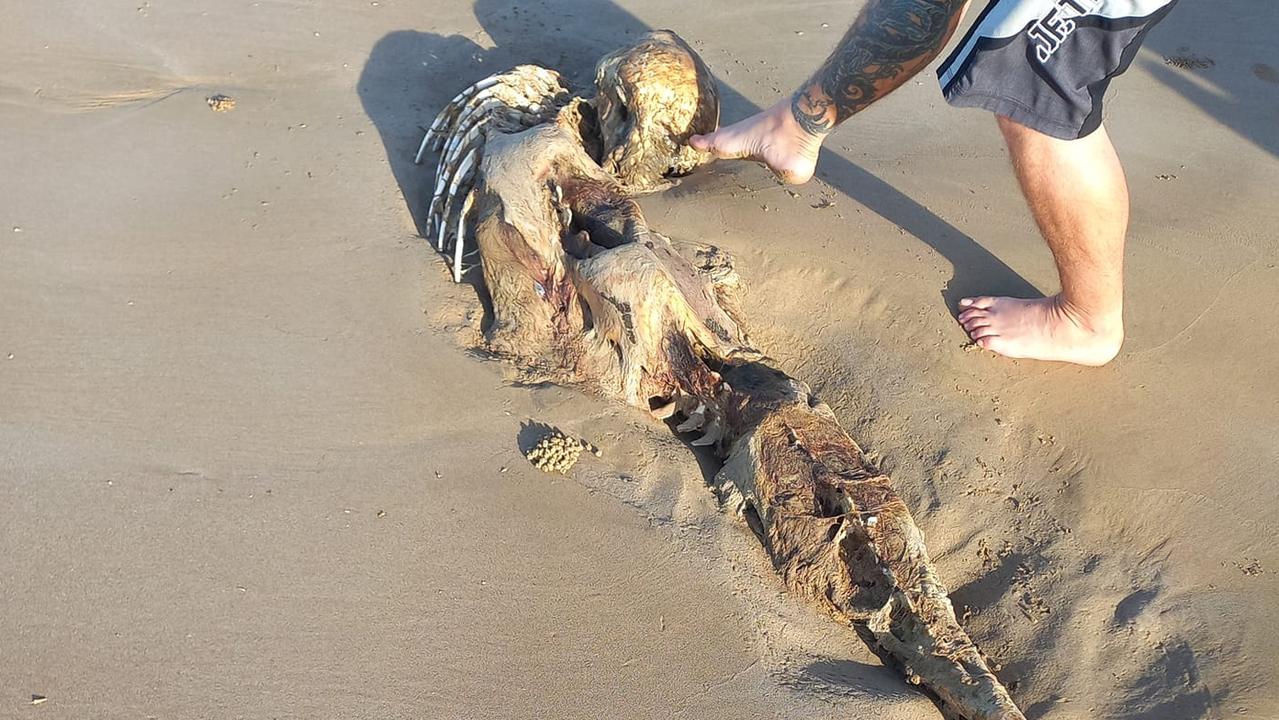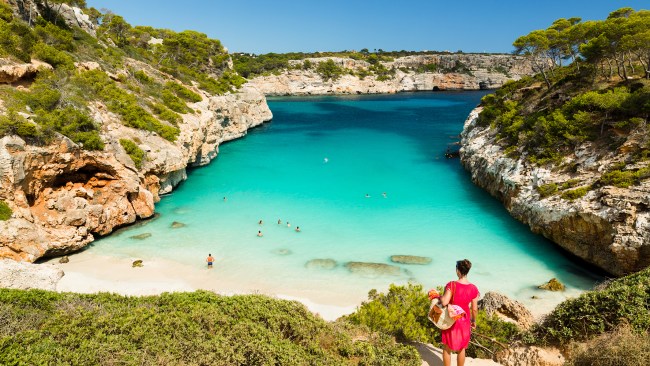Scary skeletal remains found on Qld beach
Grotesque skeletal remains have been found washed up on a Queensland beach with horrified commenters speculating the creature may have once been a mermaid. Now experts have weighed in.

Lifestyle
Don't miss out on the headlines from Lifestyle. Followed categories will be added to My News.
Grotesque skeletal remains have been found washed up on a beach in Keppel Sands last week. In a social media post beachgoer Bobbi-Lee Oates asked if anyone had any idea what the creature may have once been.
“We came across this, wondering if anyone has any idea what it is or who I could possibly get to find out exactly what it is,” the post read.
Queenslanders were quick to jokingly speculate the remains of a mermaid, or a siren may have been discovered, while commenter Thomas Heggs recommended contacting police.
“Contact local police man that looks human,” he said.
One commenter explained why the creature couldn’t possibly have been a mermaid.
“I’d like to point out that the skull doesn’t give me a lot of ideas, it’s still covered in soft tissue to resemble the animals head and doesn’t reveal the actual skull, this isn’t a mermaid,” Julia Buznyska said.

“Mermaids are fat and thick boned.”
Most commenters believed the skeleton may have been a dugong, sea lion or a dolphin.
“Likely a dolphin of some sort. The head is twisted back on the body, snout tucked under neck. Highly decomposed, but not completely,” David Evans said.
Amber Saville-Andree agreed it was most likely to be a marine mammal.
“My vote is cetacean. It looks like the head is turned backwards and the rostrum is buried in the sand,” the post read.
A small group of commenters believed it may have once been a kangaroo or a malformed calf.
James Cook University Environmental Science Emeritus Professor Helene Marsh assessed the photos and said it was ‘definitely a decomposing marine mammal’.
“The most likely marine mammals of that size would be dugongs, dolphins and the very occasional seal,” she said.
“The shape of the presumed head and the robustness of the ribs suggests a seal, as does the posterior long bone.
“Hard to tell but I think it is most likely a seal.”



